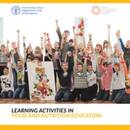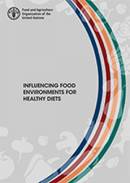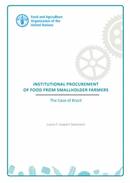Publications
Food and nutrition education goes far beyond the dissemination of information. It comprises a combination of evidence-based and behaviourally-focused educational strategies, which involve the active participation of all relevant actors and are reinforced by an enabling environment. The aim is to build healthy food-related practices and outlooks, as well as understanding, in communities, groups and individuals.
Food environments may be thought of as all the foods which are available and accessible to people in the settings in which they go about their daily lives. That is, the range of foods in supermarkets, small retail outlets, wet markets, street food stalls, coffee shops, tea houses, school canteens, restaurants and all the other venues where people procure and eat food.
This study provides an overview analysis of the Brazilian case and learning process with regard to Institutional Procurement Programmes (IPPs), by examining both Brazilian IPPs from a comparative perspective: Programa de Aquisição de Alimentos / Food Procurement Programme [PAA] and Programa Nacional de Alimentação Escolar / National School Feeding Programme [PNAE].
School feeding and possibilities for direct purchases from family farming in Latin America is a FAO contribution towards a better understanding of the subject of school feeding, strengthening the way it is addressed, and enabling the development of sustainable SFPs in the participating countries, considering their situation.
These lessons are meant for anyone who wants to learn how to improve their diets and eating habits. While oriented toward use in the classroom, the lessons can also be used by groups outside the classroom, such as youth groups or community or religious groups, and by individuals who want to learn on their own.





